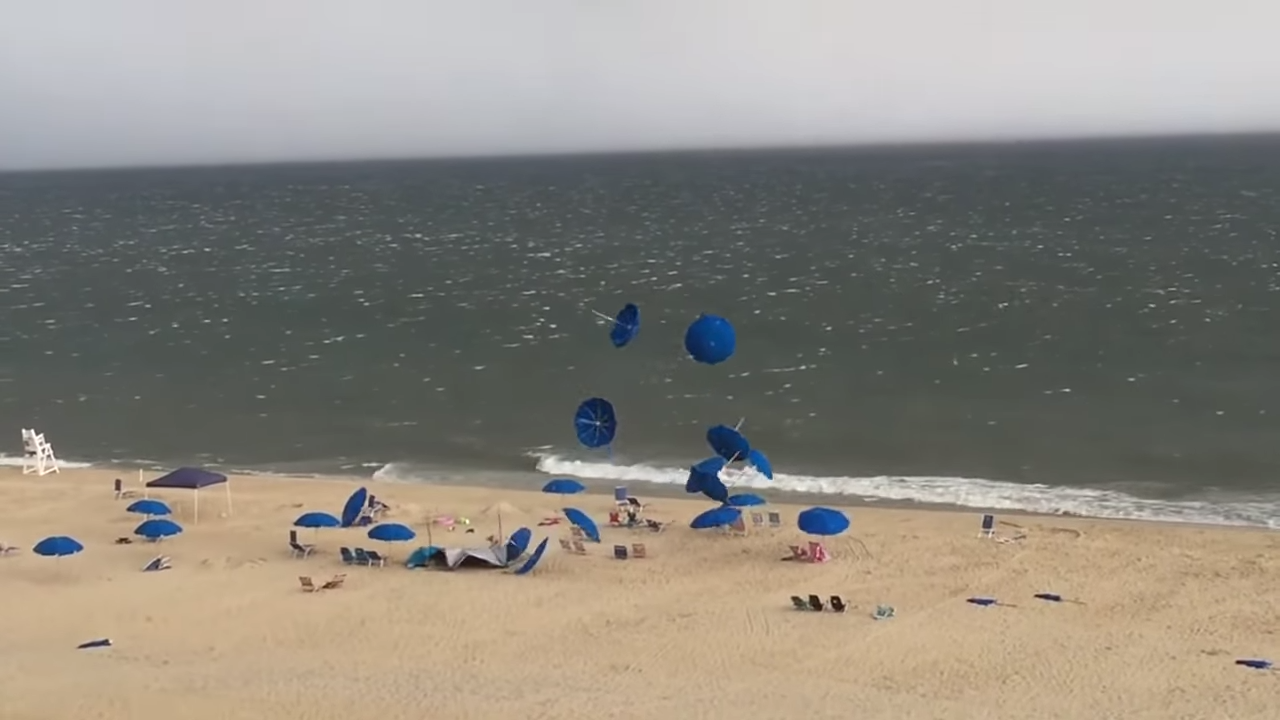I decided there had to be a better way to keep beach umbrellas, 4wd awnings, gazebos and portable awnings from blowing away in the wind. As a previous teacher of aeronautics in a private boys school I was quite familiar with the aerodynamic forces in play when it came to flight. All that was needed for an object to take flight was for the amount of lifting force acting on it to be greater than the force of gravity holding it down.
The shape of these very light weight shade structures means that as a column of air (the wind) moves across them the distance across the outside of the roof of the structure is much longer due to its triangular shape than the direct path the air can take underneath the structure. This results in the air spreading out across the top making it less dense causing an area of low pressure. The easy path underneath forms an area of high pressure. This generates an upward force called lift. Once the lift exceeds the amount of downforce generated by gravity the object will lift off the ground.
Traditionally the answer to this has been to increase the amount of gravity by adding additional weight to the base of the legs. This will work to a certain degree but eventually if the wind is strong enough the lift generated will win, particularly on a structure with a large surface area. The answer to this would be to use the strongest force available to hold down the shade device. In the case of a solid substrate like concrete or bitumen the only answer is to use gravity as anchoring into the substrate with pegs is impossible.
The strongest way to anchor shades when on grass is to drive tent pegs into the ground at each corner of the structure. By increasing the size and angling these pegs away from the base of the leg at different angles the ground holding force can be radically increased to the point where it becomes equivalent to a weight of over 100 kg at each corner. By anchoring the shade at each corner at the feet it eliminates the need for guy ropes and pegs which removes trip hazards from ropes in the dark.
When used on the beach the guy ropes and tent pegs become useless. A different method of securing is required. By increasing the surface area of the feet at each corner we can take advantage of the additional density of wet sand and also a new force, suction. By attaching the enlarged foot to the leg and then burying it up to 30 cm in the sand we are using the weight of the wet sand to increase the amount of gravity acting on the foot. By taking a bucket of water and tipping it over the wet sand we are displacing the air from between the grains of sand and compacting them so densely that air cannot enter. This results in a vacuum developing between the underside of the foot and the wet sand. As we try to pull the leg out we are pulling against both the weight of the wet sand and also the suction force. This is similar to when you try to separate two sheets of glass.
But how do I get the water to the base of the leg? Wont I have to take a bucket with me? You could and a lot of times the kids will already have a bucket. If you don’t then you can use one of our portable water and sand weights called the GravityGuard. It is a waterproof drybag that keeps water out but that also keeps water in. It can be filled with up to 10 litres of water and carried to the base. It can also be used when weighting the corners on concrete or bitumen and filled with a mix of sand and water. This mix has a combined density of over 2.0 and means that 10 litres of saturated sand weighs over 20 kg. If you add two of these at each corner you will have a combined weight of over 40 kg at each corner.
The answer to all these problems is the WindGuard system. It is a system of four products that make it impossible for any portable shades from beach umbrellas and 4wd awnings to Gazebos or canopies to take off in the wind. Remember if you don’t want to lose it in the wind, you need to guard it!

